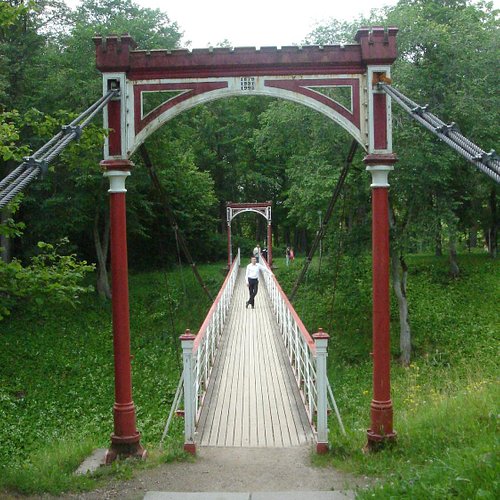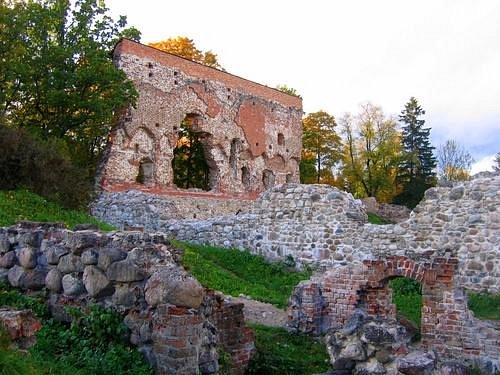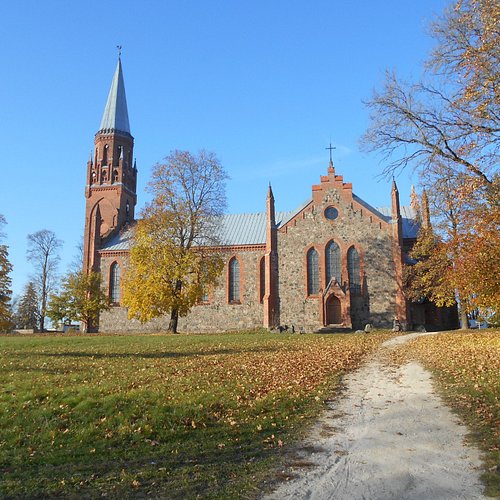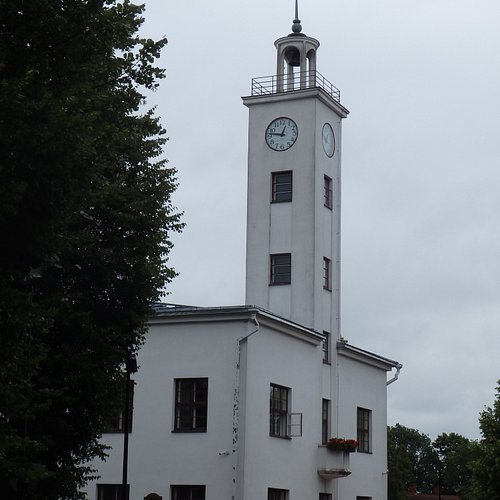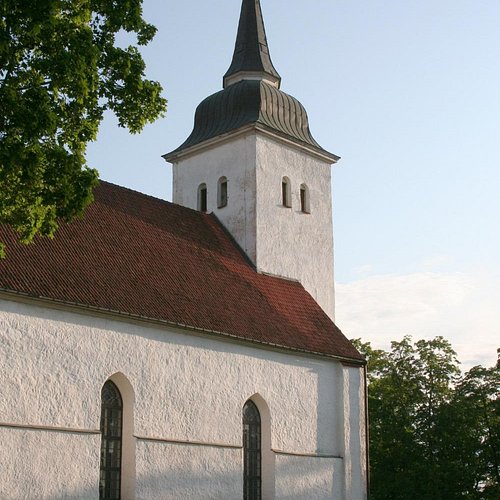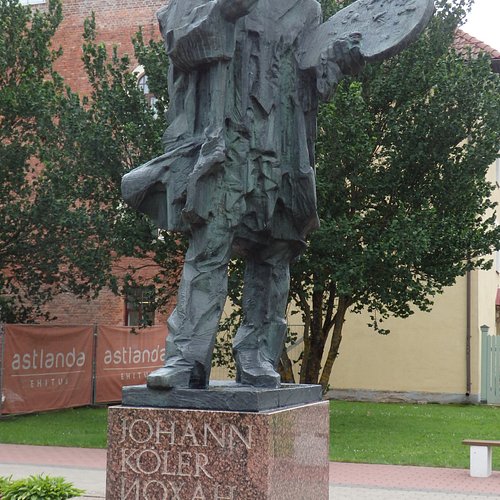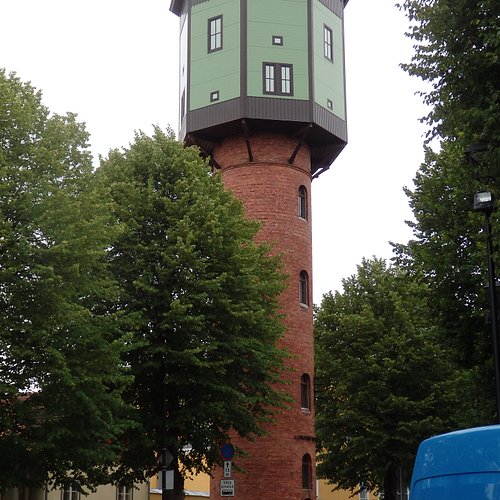Things to do in Viljandi, Viljandi County: The Best Sights & Landmarks
Viljandi (Estonian pronunciation: [ˈʋilʲˑjɑnʲˑdi]; German: Fellin) is a town and municipality in southern Estonia with a population of 17,473 in 2013. It is the capital of Viljandi County. The town was first mentioned in 1283, upon being granted its town charter by Wilhelm von Endorpe. The town became a member of the Hanseatic League at the beginning of the 14th century, and is one of five Estonian towns and cities in the league. The once influential Estonian newspaper Sakala was founded in Viljandi in 1878.
Restaurants in Viljandi
1. Halliste Holy Anna Church
Overall Ratings
5.0 based on 1 reviews
The Halliste Lutheran Church is one of the most beautiful and interesting churches in Estonia. The Halliste Church, which was seriously damaged in the course of various wars, acquired its present appearance in 1991 with the help of local initiative. When visiting the church, make sure to look at the altar painting entitled Christ by Estonian artist Juri Arrak and enjoy one of the frequent concerts.Interesting facts: - The church has an unusual black ceiling.- After a fire in 1959, the church stood in ruins for 30 years.- The oldest parts of the current stone church dates from the 15th century.- The Halliste Church is the home church of Estonian President Toomas Hendrik Ilves.
2. Viljandi Rope Bridge
Overall Ratings
4.5 based on 63 reviews
The bridge made by the Riga company Felser & Co in 1879 was erected amid the castle hills in Viljandi in 1931. It was a present by the lord of the Tarvastu Manor Karl von Mensenkampf.Interesting to know:*The bridge is over 50 m long.* It was erected over a valley which is 15 m deep.* At first, the bridge was located over the moat in Tarvastu to make it easier for the family of the lord to visit the chapel in the ruins. The rope bridge has become a favourite object of both citizens and visitors of Viljandi and one of the town’s important symbols. It was reconstructed in 1995.
Reviewed By parazzzite - Vilnius, Lithuania
Cute little bridge to observe nature and swing a little, if that is your thing. Nothing interesting on the other side, the bridge itself is fun for a quick stop
3. Ruins of the Viljandi Order Castle
Overall Ratings
4.5 based on 118 reviews
The stone castle started to appear on the place of the former Estonian stronghold in 1224. The fortress got its final shape and size in the beginning of the 16th century and was one of the distinguished fortresses in Estonia and Latvia. Due to wars between Sweden, Poland and Russia all that is left from the entire order castle today are just a few stone walls.Already in the beginning of the last century the ruins of the fortress and the park around it turned into a recreational area for the residents of Viljandi. In order to access the castle hills from town a rope bridge was build from the Kaeuvumagi hill over the 13 meters deep trench in 1931. From the ruins you have the most beautiful view over the lake of Viljandi.
Reviewed By 942ld - Meise, Belgium
This park with the ruins breathes a great history, Viljandi is often called the most beautiful rural city of the baltics and this is certainly one of the main reasons. The ruins offer great views on the lake and the surrounding areas. The park also houses several nice areas where kids can play.
4. Viljandi Pauluse Kirik
Overall Ratings
4.5 based on 8 reviews
When the town of Viljandi started to grow in the middle of the 19th century the only church in town became too small for the people. The Viljandi estate owner baron Ungern-Stenberg gave the community a part of his estate as building ground for the church.Interesting to know:· The architect of the sanctuary that was consecrated in 1866 was Matthias von Holst.· During the construction of the building so called Tudor Gothic elements were used as they were fashionable at that time. · The author of the altar painting "Christ on the Cross" is Karl Christian Andreae.· Since 1866 a G. Knauf organ fills the church with music, the biggest still functional organ of its kind in Estonia.
5. Town Hall and monument to the mayor August Maramaa
6. St. John's Church
Overall Ratings
4.0 based on 25 reviews
The church devoted to John the Baptist was erected in the 17thC upon the ruins of a Franciscan abbey. The church was destroyed several times in various wars and then invariably rebuilt. Still functioning after the Second World War, it was closed in 1950 and turned into a warehouse.It was consecrated again in 1992 and is now often used as a concert venue. Interesting to know:*This place of worship contains the communion table by Aivar Oja and stained-glass windows by Renee Aua.*Wall carpets have been made by the local textile artist Prof. Anu Raud, whose work "Mother Tree” is displayed in the UN's main building in New York.
7. Monument to Johann Koler
Overall Ratings
4.0 based on 6 reviews
This monument was erected to mark the 150th anniversary of the birth of the founder of Estonian nationalist painting.Johann Koler was born in the parish of Suure-Jaani in Viljandi County.Did you know…?*Having studied painting at the Academy of Art, Koler went on to further studies in Germany, the Netherlands, Belgium, France and Italy.*He was employed in the court of the Russian emperor as the drawing teacher of the tsar’s daughter. *He corresponded with forward-thinking Estonian intellectuals and took part in events as part of the nationalist movement.The monument was sculpted by Edgar Viies, having been designed by Rein Luup.
8. Old water-tower of Viljandi
9. Trepimagi
Overall Ratings
3.5 based on 5 reviews
The stairs of the Trepimagi in Viljandi were constructed around the end of the 19th century and the beginning of the 20th century in order to improve the road connecting the town and the lake. The stairs have five flights and 158 steps. Next to the Trepimagi lie the beautiful homes of the town’s merchants and rich residents from the old days.Interesting to know:· In the course of the Viljandi Hanseatic Days a run on the Trepimagi is organised and all participants who beat the time of the former county governor Helir-Valdor Seederi are rewarded with a medal.The Trepimagi was reconstructed in 1991.
10. German Soldiers' Cemetery
Overall Ratings
3.5 based on 3 reviews
The cemetery was established during the Second World War. First German soldiers killed in battles were buried there already in the summer of 1941. In the autumn of 1944 the Soviet occupation army destroyed all gravestones. In 1991-1993 the German War Graves Commission restored the cemetery. It is now a resting place for about 700 soldiers who perished in battles and died in hospitals. A couple of dozens of them are Estonians.


